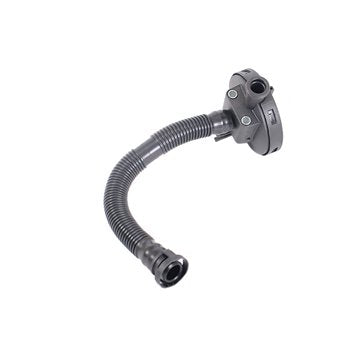Rely on a premium clp engine for heavy-duty use.
Wiki Article
How a Clp Engine Can Improve Performance in Different Industries
The arrival of CLP engines notes a significant change in functional efficiency across different sectors, driven by their ability to maximize gas consumption and minimize downtime. As organizations increasingly prioritize sustainability alongside effectiveness, the duty of CLP engines ends up being even a lot more essential.Introduction of CLP Engines
CLP engines, or Continual Liquid Propellant engines, represent a significant advancement in propulsion technology, especially for space applications. These engines utilize a constant feed system that permits the continual expulsion of propellant, causing improved effectiveness and efficiency contrasted to typical solid or hybrid propulsion systems. By maintaining a continuous flow of fluid propellant, CLP engines can accomplish a lot more exact drive control, which is critical for navigating spacecraft in numerous objective situations.The style of CLP engines incorporates innovative materials and innovative fuel administration systems. clp engine. This causes lowered weight and increased integrity, vital aspects for long-duration room goals. The constant procedure decreases the threat of burning instability, a typical difficulty in conventional rocket engines.

Advantages in Production
The manufacturing of Constant Liquid Propellant (CLP) engines presents several remarkable benefits that boost both efficiency and cost-effectiveness. One of the main advantages is the streamlined manufacturing process, which minimizes the intricacy related to conventional propulsion systems. By utilizing liquid propellant, makers can achieve better precision in engine performance, resulting in optimized power outcome and decreased waste.Additionally, CLP engines facilitate a higher level of modularity, permitting for simpler integration right into numerous manufacturing lines. This adaptability can dramatically reduce lead times and boost general operational adaptability. Using CLP technology likewise tends to decrease the need for comprehensive upkeep because of less moving components, which equates into minimized downtime and operational expenses.

Applications in Logistics
Leveraging Constant Liquid Propellant (CLP) engines in logistics uses considerable benefits in functional effectiveness and dependability. These engines supply a durable option for different transport requirements, allowing the seamless motion of products across vast distances. The inherent layout of CLP engines permits for regular power result, which equates into smoother and much more predictable transportation schedules.Among the crucial applications of CLP engines in logistics remains in durable freight transportation, where they can drive both ground and airborne automobiles. Their capability to maintain high performance under differing tons conditions ensures that distribution timelines are fulfilled, thus enhancing consumer contentment. Furthermore, CLP engines can be integrated right into automated logistics systems, promoting real-time monitoring and optimizing course preparation.
Moreover, the resilience of CLP engines reduces upkeep downtime, allowing logistics firms to optimize their operational capacities. This is especially advantageous in warehousing procedures, where effectiveness in handling and carrying goods is essential. As logistics continues to evolve, the assimilation of CLP engines represents a forward-thinking technique that not only boosts performance however also sustains the industry's growing needs for reliability and rate.
Effect On Power Efficiency
How do Continual Fluid Propellant (CLP) engines boost energy efficiency in transportation? CLP engines make use of a consistent flow of liquid gas, optimizing burning procedures and keeping a stable drive result. This design lessens power losses related to typical combustion engines, where fuel shipment can differ and lead to ineffectiveness.The continual procedure of CLP engines permits a much more effective thermal cycle, causing greater specific impulse compared to traditional engines. clp engine. This converts to lowered fuel consumption for the exact same quantity of job done, dramatically lowering operational costs across Clicking Here different transport fields, including air travel and maritime markets
In addition, the capacity of CLP engines to maintain optimal performance under varying load conditions minimizes the demand for constant acceleration and deceleration, further enhancing fuel efficiency. Improved energy efficiency not only adds to cost savings but also results in lower greenhouse gas emissions, aligning with like it global sustainability goals.
Future Trends and Innovations
Emerging improvements in Constant Fluid Propellant (CLP) engine innovation assurance to change the landscape of transport efficiency and sustainability. As industries pivot towards greener choices, CLP engines stand at the center, incorporating cutting-edge products and style approaches that enhance performance while minimizing ecological influence.One of the most encouraging patterns is the adoption of hybrid systems that incorporate CLP engines with eco-friendly energy sources. This harmony can maximize fuel consumption and reduce exhausts, lining up with global sustainability objectives. Innovations in computational fluid dynamics (CFD) are facilitating the layout of even more aerodynamically efficient engines, leading to lowered drag and enhanced gas effectiveness.
Furthermore, the development of wise monitoring systems is readied to improve operational performances. These systems utilize data analytics and IoT modern technology to enhance engine efficiency in real-time, guaranteeing that the engines run within their most effective criteria.
As research continues to discover alternative propellant formulas-- More Help such as biofuels and artificial gas-- the future of CLP engines looks promising. By using these developments, markets can not just improve their effectiveness yet also contribute substantially to a cleaner, much more sustainable future in transport.
Final Thought
To conclude, CLP engines stand for a substantial innovation in effectiveness throughout numerous sectors. Their capability to enhance gas intake and minimize functional costs, incorporated with a continuous feed system, improves power output and functional reliability. The integration of innovative products and fewer moving components decreases upkeep demands, while positioning with sustainability objectives placements CLP engines as a crucial technology for the future. Continued development in this field promises further improvements in efficiency and environmental efficiency.Report this wiki page